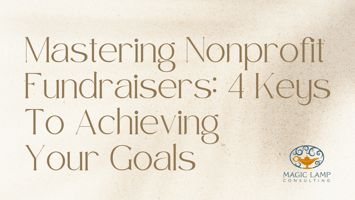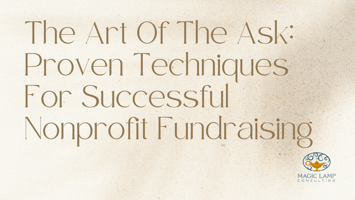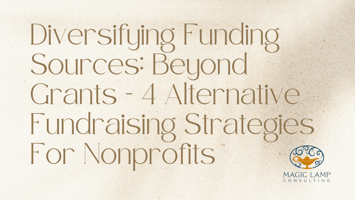In the nonprofit world, fundraising plays an important component in each organization's financial...
Understanding the Nonprofit Fundraising Cycle

Nonprofit organizations play a crucial role in addressing various social and environmental challenges. To effectively fulfill their missions, they rely on a combination of income sources, with fundraising being a cornerstone of their financial sustainability. Fundraising isn't just about soliciting donations; it's a dynamic and cyclical process that involves planning, engagement, execution, and evaluation. In this blog, we will delve into the nonprofit fundraising cycle, providing insights into its key stages and strategies for success.
The Fundraising Cycle: A Continuous Journey
Identifying Funding Needs and Goals
Every successful fundraising effort begins with a clear understanding of your organization's financial needs. This involves identifying specific projects, programs, or initiatives that require funding and setting realistic goals for fundraising. Clearly defined objectives will guide your efforts and help you communicate your fundraising purpose effectively to potential donors.
Engaging Supporters
Engaging with your existing supporters and potential donors is essential. Effective engagement involves building and nurturing relationships. Share stories, updates, and success stories to connect emotionally with your audience. Use various communication channels, including social media, email newsletters, and in-person events, to keep supporters informed and engaged.
Planning Diverse Fundraising Activities
Fundraising is not one-size-fits-all. To maximize your reach and impact, explore a variety of fundraising activities that appeal to different preferences and interests. Consider a mix of traditional events like galas, auctions, and runs/walks, as well as online strategies like crowdfunding and peer-to-peer fundraising. A diversifying approach to fundraising allows you to engage a broader donor base.
Executing Fundraising Campaigns
Once you have developed a fundraising plan, it is crucial to execute it effectively. . Develop compelling campaigns that resonate with your target audience. Use storytelling, multimedia, and impactful messaging to convey the importance of your cause. Implement effective donation mechanisms, such as online platforms or mobile apps, to make giving easy and convenient for donors.
Acknowledging and Stewarding Donors
Gratitude is a fundamental aspect of fundraising. Promptly acknowledge donations, send personalized thank-you notes, and recognize donors publicly when appropriate. Stewardship involves maintaining ongoing communication with donors, updating them on the impact of their contributions, and involving them in your organization's activities.
Evaluating and Learning
Continuous improvement is key to fundraising success. Regularly evaluate the performance of your fundraising efforts. Analyze which strategies yielded the best results and learn from any challenges or setbacks. Build upon your successes, learn from your experiences, and refine your strategies to make each fundraising cycle more effective than the last.
Understanding the nonprofit fundraising cycle is vital for the financial sustainability and growth of the organization. It's not just about raising funds; it's about building and nurturing relationships with supporters, effectively communicating your mission, and making a meaningful impact in your community. By following these key stages and continuously improving your fundraising efforts, you can create a successful and sustainable fundraising cycle that advances your organization's mission and goals.




